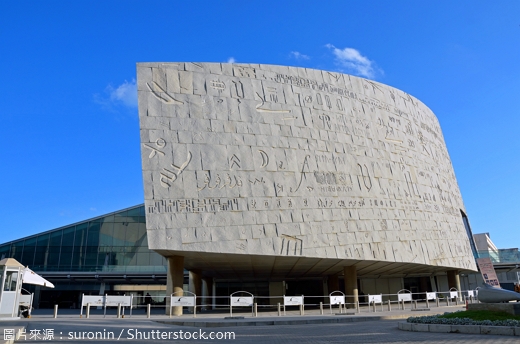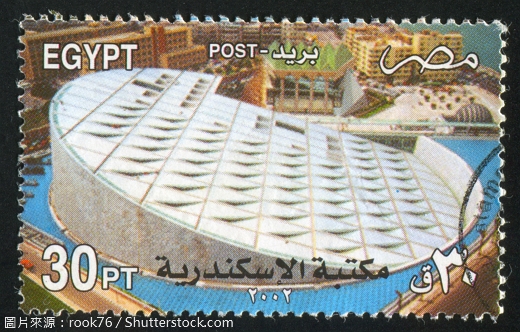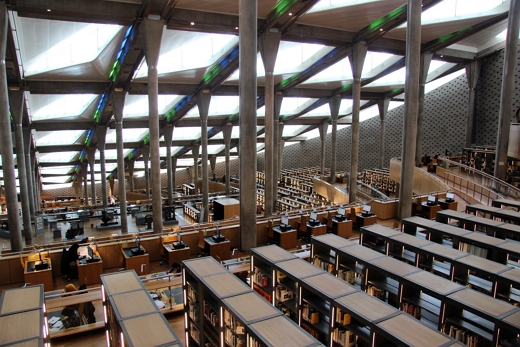Every major city in the world today has a library. That was not always the case. Only a few cities in the ancient world were home to libraries. Perhaps the greatest of those was the Library of Alexandria in Egypt.
Built in the third century BCE, the library was dedicated to the Muses, the nine goddesses of the arts, and was made up of several buildings. This center of ancient learning was comprised of not only hundreds of thousands of scrolls but also a reading room, meeting rooms, lecture halls, gardens, and a dining room for local and visiting scholars. Some say it was a blueprint for future university campuses.
The library’s main collection held works on astronomy, philosophy, architecture, physics▼, mathematics▼, geography, medicine, and other important topics of the day. Some of the greatest ancient minds visited and worked there, including Euclid, Galen, Archimedes, and Eratosthenes. Foreign scholars were welcomed and even given stipends▼ by the Egyptian pharaohs to support themselves during their stays. The library housed the known writings and research of the day. To deal with its vast collection, a system of categorization▼ had to be developed, laying the groundwork for today’s library cataloging systems. Another development that was first seen in the Library of Alexandria was the concept of a book. Since many writings could not be completed on a single piece of papyrus▼, several scrolls were required for lengthy works, and each one became divided like chapters.
Due to fires, foreign conquest, and even earthquakes, the library was eventually destroyed. Still, the spirit of research and its organization survived, as other libraries came to life afterwards. They are rooted in the glorious accomplishments of the Library of Alexandria.
------------------------------------------
1. What is the main purpose of this article?
(A) To introduce the world’s smallest library.
(B) To encourage people to study at libraries.
(C) To share the history of the Library of Alexandria.
(D) To compare the Library of Alexandria with modern ones.
------------------------------------------
2. What is true about the Library of Alexandria?
(A) It was built by international scholars.
(B) It was a complex▼ of buildings and facilities.
(C) It held the world’s tallest buildings at the time.
(D) It was located in the capital of Ancient Egypt.
------------------------------------------
3. Which of the following is NOT mentioned in the passage?
(A) Who used the Library of Alexandria.
(B) When the Library of Alexandria was built.
(C) How long it took to build the Library of Alexandria.
(D) Where the Library of Alexandria was built.
------------------------------------------
4. What does the word “stipends” in the third paragraph most likely mean?
(A) Amounts of money.
(B) Comfortable chairs.
(C) House servants.
(D) Research assistants. 


|


沒有留言:
張貼留言